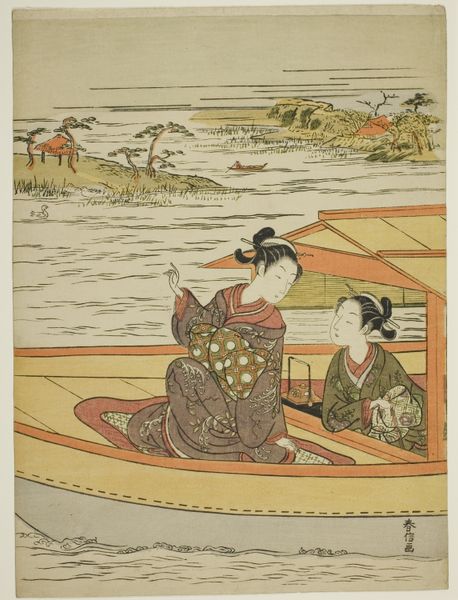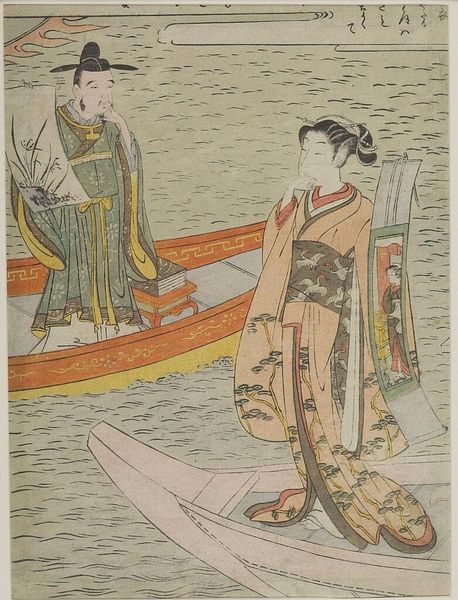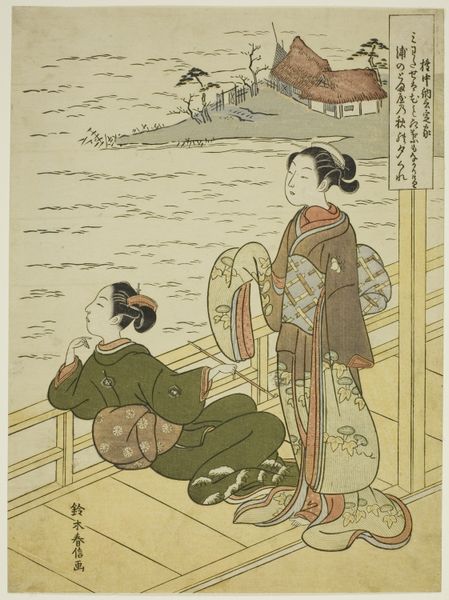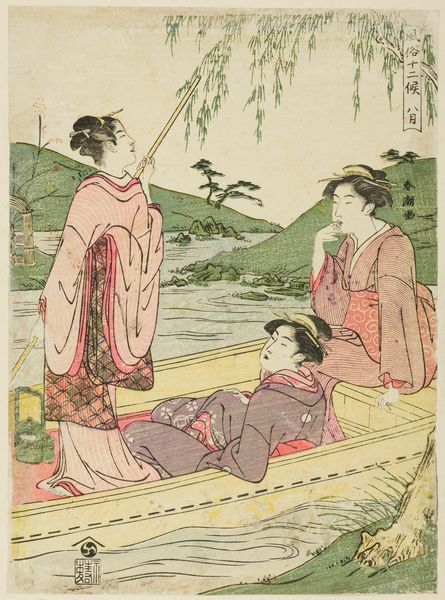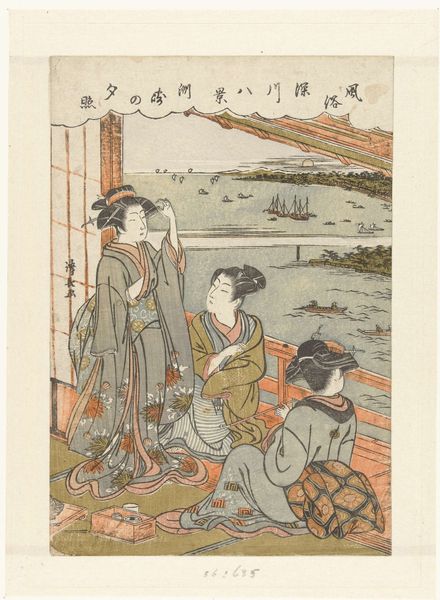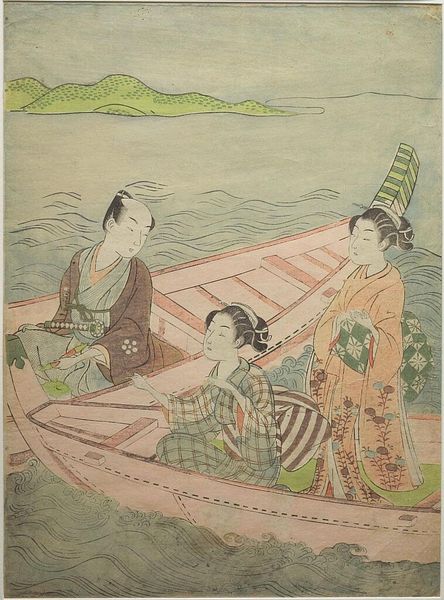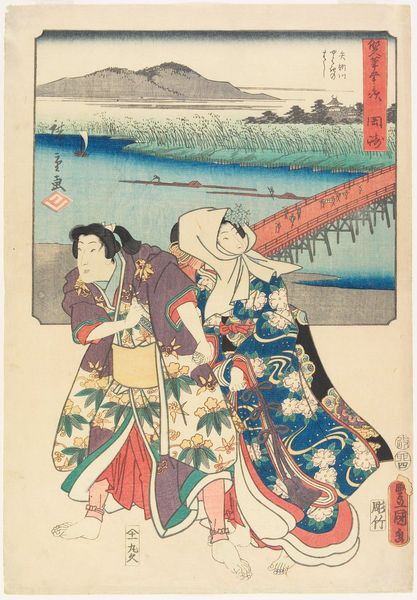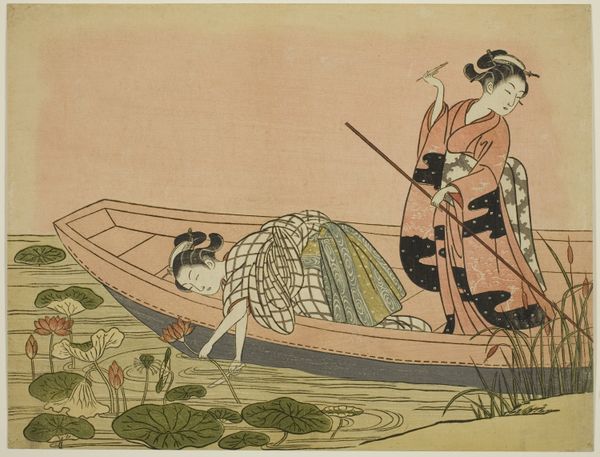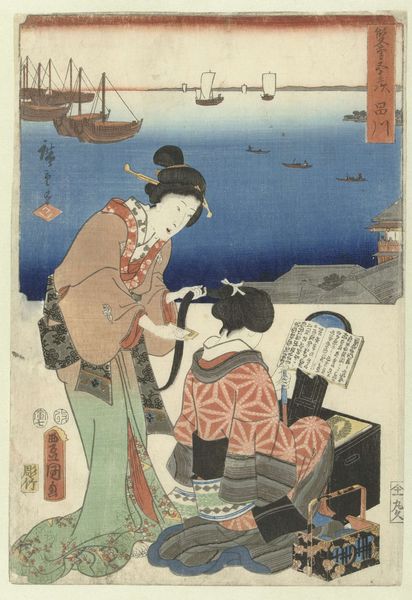
print, woodcut
# print
#
asian-art
#
landscape
#
ukiyo-e
#
figuration
#
woodcut
#
genre-painting
Dimensions: 11 1/4 × 8 7/16 in. (28.6 × 21.5 cm) (image, sheet, vertical chūban)
Copyright: Public Domain
Curator: Let’s take a moment to look at Suzuki Harunobu's woodcut print, "A Fishing Party," created around 1766-1767. It resides here at the Minneapolis Institute of Art. My first reaction is a gentle, nostalgic pull, almost a sigh. How about you? Editor: Well, I feel an immediate sense of stillness and elegance. The delicate colors and the simplified forms create a very calming scene. It feels like peeking into a quiet, almost secret moment. Curator: Absolutely, that's Harunobu’s mastery coming through. Thinking about the materiality, each line, each block of color represents immense labor, not just from Harunobu himself but the woodblock carvers and printers too. This wasn't some solitary genius; it was a whole industry bringing images to life. The production itself mirrored the collaborative leisure depicted, don't you think? Editor: A thought that pops to mind: isn’t it strange how this image of apparent leisure came to be from such deliberate, labor-intensive means? It's kind of funny. This almost idyllic picture certainly came about from a long and probably painful journey! I'm half in admiration, half slightly terrified. Curator: That friction you're feeling is precisely what makes this Ukiyo-e piece compelling. Beyond just beautiful aesthetics, it documents specific forms of labor and artistic consumption, which are connected to societal frameworks around that period of time. How class and artistry are tied together like fishing lines here... Editor: Fishing lines… yeah, it’s such an ordinary motif made so elegant through skillful craftsmanship. There is a wistful aspect to the scene that’s strangely seductive! It’s got that “days gone by” atmosphere...a very delicate impression that lingers. It reminds me of dreams… not too specific, very ethereal. Curator: And there is something interesting in its relationship to consumerism in that epoch too. Its mass production using printing techniques makes this art, which features traditional landscapes, open to broad consumption patterns and changes in society. Editor: I see what you mean: a very intricate craft process turned into widespread cultural phenomenon... That does add another dimension to my reading, it no longer seems simply pastoral, but a product too. And in its way a mirror. Well, I certainly won't look at Harunobu the same way again.
Comments
No comments
Be the first to comment and join the conversation on the ultimate creative platform.
